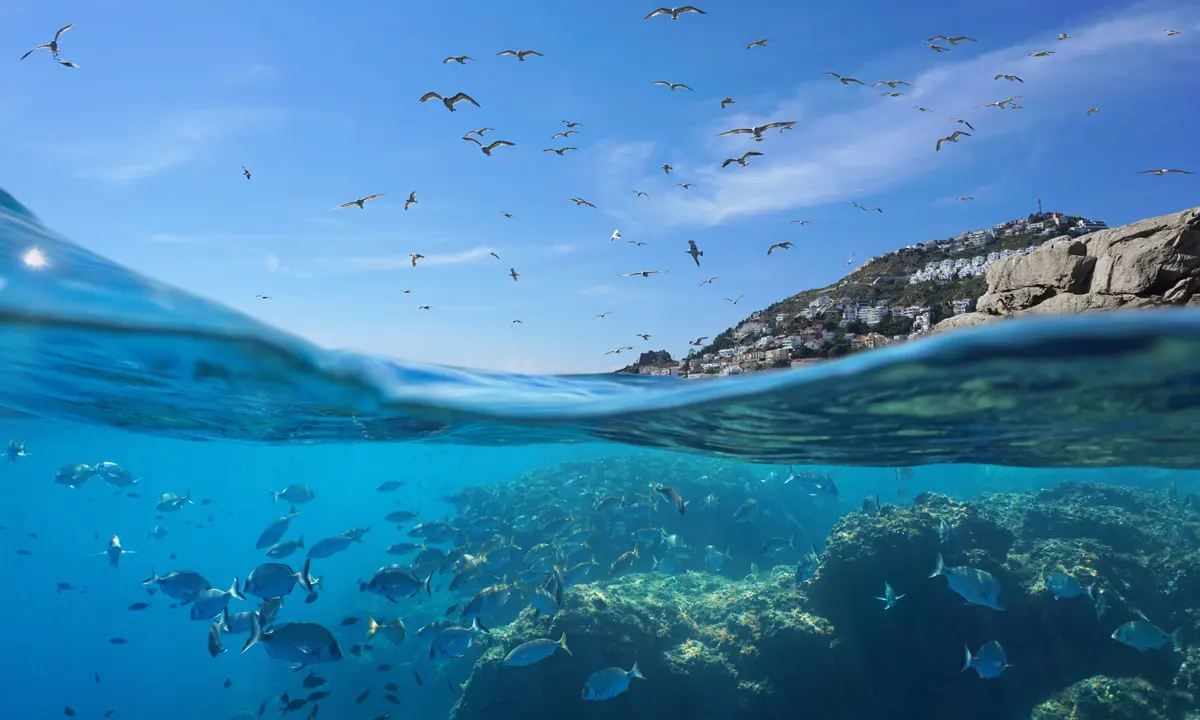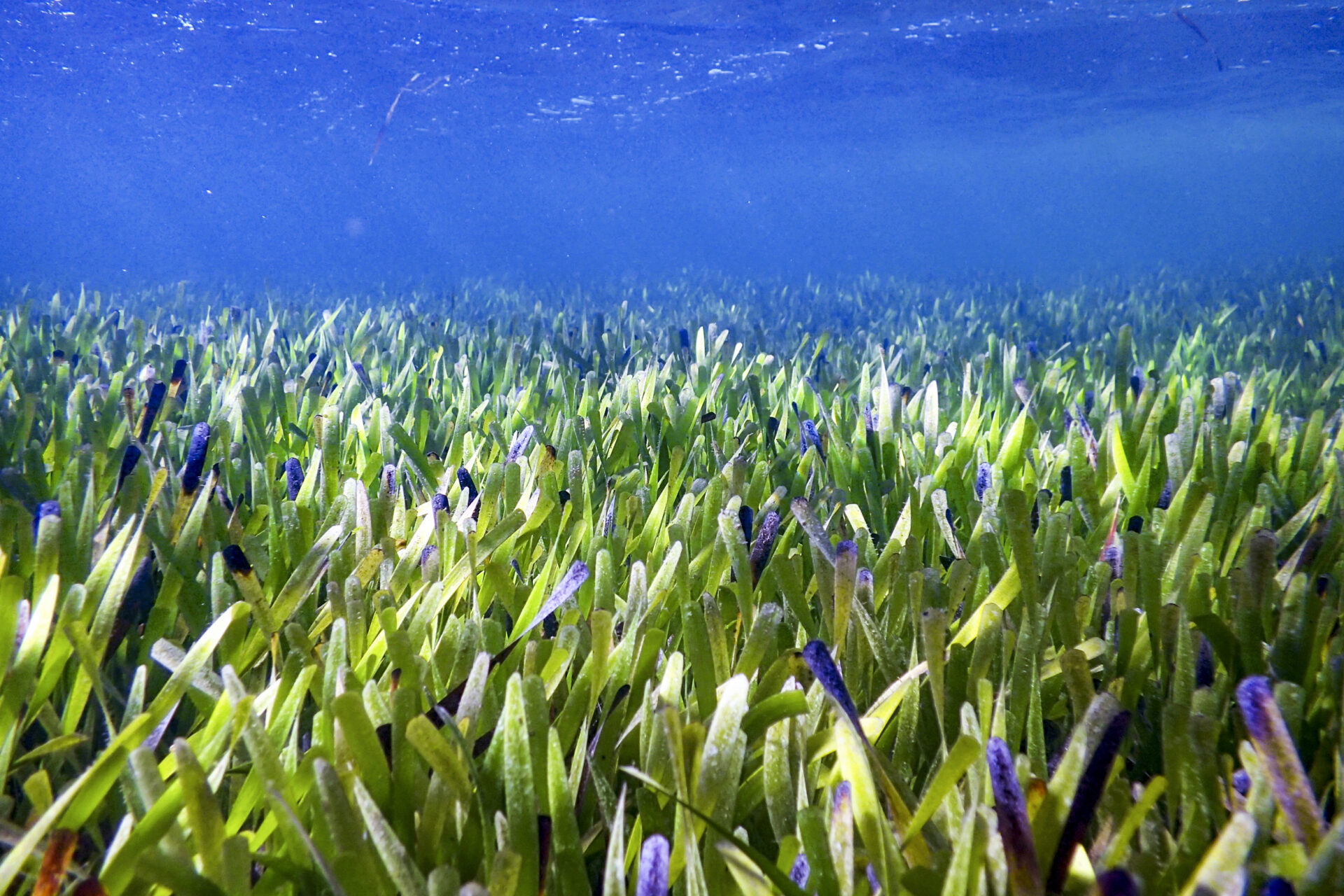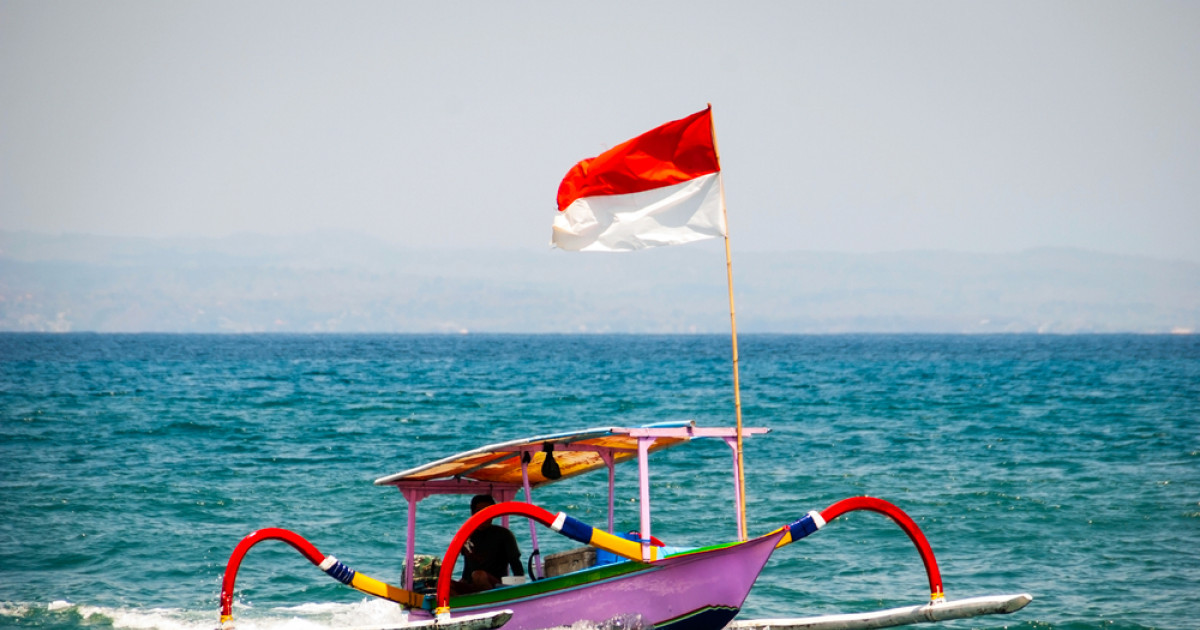
Ocean. Source: https://i.guim.co.uk/
- Blue carbon is carbon stored in coastal and marine ecosystems.
- There are three ecosystems that are the main focus of blue carbon, namely mangrove forests, seagrass meadows, and salt marshes.
- Indonesia has 25% of the mangrove ecosystem and seagrass meadow, with this percentage, Indonesia will have great significance in mitigation and adaptation to global climate change.
Our beautiful earth consists of several ecosystems that support living things’ survival. Undeniably, one ecosystem with another has a connection in maintaining the continuity of life on this earth.
One of the ecosystems that contributes a large role in the marine ecosystem. Marine ecosystems have a role in dealing with carbon emissions that are increasing yearly. Wetland has stolen the world’s attention because it has an important role in climate change mitigation efforts.
By looking at this potential, the term blue carbon was born. Blue carbon is carbon stored in coastal and marine ecosystems. Or in other words, this term refers to the carbon absorbed and stored in coastal and marine ecosystems.
Some of the benefits of blue carbon include:
1. Increasing the effectiveness of carbon sequestration.
2. Being a natural solution in dealing with climate change due to the greenhouse effect.
3. Help maintain the sustainability of coastal ecosystems.
4. Become a source of income for coastal communities that provide ecological services.
The role of blue carbon in climate change mitigation and adaptation was first initiated by countries involved in the Paris Agreement Parties. Until now, there are three ecosystems that are the main focus of blue carbon, namely mangrove forests, seagrass meadows, and salt marshes.
Baca Juga
- PLTAL (Pembangkit Listrik Tenaga Air Laut) Berpotensi Tinggi Berkembang Besar di Indonesia!
- Yuk Kenalan Sama Pembangkit Listrik yang Ada Di Laut
Mangroves Forest

Mangroves are usually found along tropical, subtropical, and some warm-climate coastlines. Many benefits provided by mangroves include food, timber, and medicine.
The extensive root structure of mangrove trees can provide a habitat for fish and shellfish protection as well as filtering sediment and airborne pollutants. In addition, the roots can hold the beach soil in place, preventing shoreline erosion. Mangrove forests can also be a source of income from ecotourism.
An equally important benefit offered by mangrove forests is the ability of these plants to contribute to regulating the global climate and mitigating anthropogenic climate change through carbon storage and sequestration.
Much like salt marshes, seagrass beds, and freshwater forest wetlands, stork forests store and sequester carbon at greater densities than many terrestrial or terrestrial ecosystems.
The potential for blue carbon stored in mangrove forests consists of surface biomass such as mangrove sediments. Mangrove leaves stems, roots, and sediment can store four to five times more carbon than terrestrial forests.
Seagrass Meadow

Similar to mangrove forests, seagrass meadow is one of the focuses in developing blue carbon. Seaweed also absorbs and stores carbon in the form of biomass whose capacity to absorb and store carbon depends on its type, location, and global environmental conditions.
There are 30,000 km2 of seagrass spread in Indonesia which represents 5% of the total seagrass meadow area in the world. It is probable that Indonesia has the largest expanses of seagrass compared to any other country.
Unfortunately, the condition of seagrass meadows in Indonesia is currently experiencing a very critical decline. This change in conditions is caused by coastal development, land reclamation, deforestation, overfishing, and waste disposal.
Salt Marsh

Salt marsh, also known as tidal marsh, are coastal ecosystems located on the upper coast between land and open salt water. This area is regularly inundated by tides. Salt marshes are usually located in infrastructure areas within the intertidal zone.
900 to 1700 tons of carbon per hectare is in the salt marshes with an estimated annual habitat loss of up to 2%. Salt marshes filter nutrients and sediment that pass along with the water.
Salt marshes are usually dominated by salt-tolerant plants, such as herbs, grasses, or low shrubs which play an important role in maintaining the stability of salt marshes in trapping and binding sediment. In addition, the surface is usually flat mud or sand.
Baca Juga
- Carbon Trading: Make a Profit and Save the Environment
- Inilah 3 Program Peduli Iklim dari Carbon Ethics!
HOW INDONESIA ACCOUNTS FOR ITS BLUE CARBON POTENTIAL

At the Our Ocean Conference in 2017, Indonesia became one of several countries that are committed to developing a blue carbon framework in their country’s development plans.
Supported by the potential for blue carbon which reaches 3.4 Giga Ton (GT), which is around 17% of the world’s blue carbon, in the past five years, blue carbon initiatives in Indonesia have grown rapidly marked by blue carbon activities involving institutions national research, non-governmental organizations, and universities.
Indonesia has 25% of the mangrove ecosystem and seagrass meadow, with this percentage, Indonesia will have great significance in mitigation and adaptation to global climate change. At the implementation of the G20, Indonesia will promote a number of things, one of which is the importance of blue carbon and blue economy.
#zonaebt #sebarterbarukan #ebtheroes
Editor: Azahra Nabila
Reference:
[1] Potensi Karbon Biru (Blue Carbon) di Perairan Indonesia
[2] Science of the Total Environment
[3] Mangrove Blue Carbon in the Face of Deforestation, Climate Change, and Restoration





46 Comment
pin up casino az https://azerbaijancuisine.com/# pin up casino azerbaycan
pin-up online casino
buying prescription drugs in mexico mexican pharmacy mexican border pharmacies shipping to usa
mexico drug stores pharmacies Mexico pharmacy that ship to usa mexican online pharmacies prescription drugs
medication from mexico pharmacy mexican pharmacy online pharmacies in mexico that ship to usa
buying prescription drugs in mexico mexican pharmacy northern doctors mexican mail order pharmacies
mexico drug stores pharmacies northern doctors reputable mexican pharmacies online
mexican mail order pharmacies: mexican pharmacy online – reputable mexican pharmacies online
best online pharmacies in mexico: buying prescription drugs in mexico – buying prescription drugs in mexico online
medicine in mexico pharmacies northern doctors pharmacy п»їbest mexican online pharmacies
https://northern-doctors.org/# mexican border pharmacies shipping to usa
buying from online mexican pharmacy: Mexico pharmacy that ship to usa – mexican rx online
medicine in mexico pharmacies: northern doctors pharmacy – mexican drugstore online
mexican border pharmacies shipping to usa: buying from online mexican pharmacy – mexican rx online
buying prescription drugs in mexico northern doctors pharmacy medication from mexico pharmacy
п»їbest mexican online pharmacies: Mexico pharmacy that ship to usa – buying from online mexican pharmacy
buying prescription drugs in mexico: Mexico pharmacy that ship to usa – mexico pharmacy
п»їbest mexican online pharmacies: mexican pharmacy – pharmacies in mexico that ship to usa
mexican online pharmacies prescription drugs: mexican pharmacy online – buying prescription drugs in mexico online
mexico pharmacies prescription drugs: mexican pharmacy – medication from mexico pharmacy
buying from online mexican pharmacy Mexico pharmacy that ship to usa mexico drug stores pharmacies
https://northern-doctors.org/# pharmacies in mexico that ship to usa
mexican rx online: cmq mexican pharmacy online – buying from online mexican pharmacy
https://cmqpharma.com/# mexican pharmacy
medication from mexico pharmacy
mexican mail order pharmacies mexican pharmacy buying prescription drugs in mexico
buying from online mexican pharmacy
https://cmqpharma.com/# mexican pharmaceuticals online
pharmacies in mexico that ship to usa
http://cmqpharma.com/# mexican online pharmacies prescription drugs
best online pharmacies in mexico
http://canadapharmast.com/# canadian pharmacy 24h com
mexico drug stores pharmacies: mexican online pharmacies prescription drugs – mexican mail order pharmacies
india online pharmacy: world pharmacy india – indian pharmacy paypal
Pretty nice post I just stumbled upon your blog and wished to say that I’ve truly enjoyed browsing your blog posts After all I will be subscribing to your feed and I hope you write again soon!
indian pharmacy online: top 10 online pharmacy in india – Online medicine home delivery
indian pharmacy online indian pharmacies safe п»їlegitimate online pharmacies india
https://canadapharmast.com/# trusted canadian pharmacy
canadian pharmacy ltd: canada pharmacy world – canadian pharmacy tampa
best india pharmacy online shopping pharmacy india indian pharmacy online
http://indiapharmast.com/# indian pharmacy
canada discount pharmacy: best canadian online pharmacy – canadian medications
best online pharmacy india: indianpharmacy com – online shopping pharmacy india
http://amoxildelivery.pro/# amoxicillin for sale online
http://ciprodelivery.pro/# buy ciprofloxacin over the counter
http://doxycyclinedelivery.pro/# cost of doxycycline in canada
https://paxloviddelivery.pro/# paxlovid for sale
https://clomiddelivery.pro/# where to buy generic clomid tablets
http://paxloviddelivery.pro/# paxlovid pill
https://doxycyclinedelivery.pro/# doxycycline singapore pharmacy
https://paxloviddelivery.pro/# Paxlovid buy online